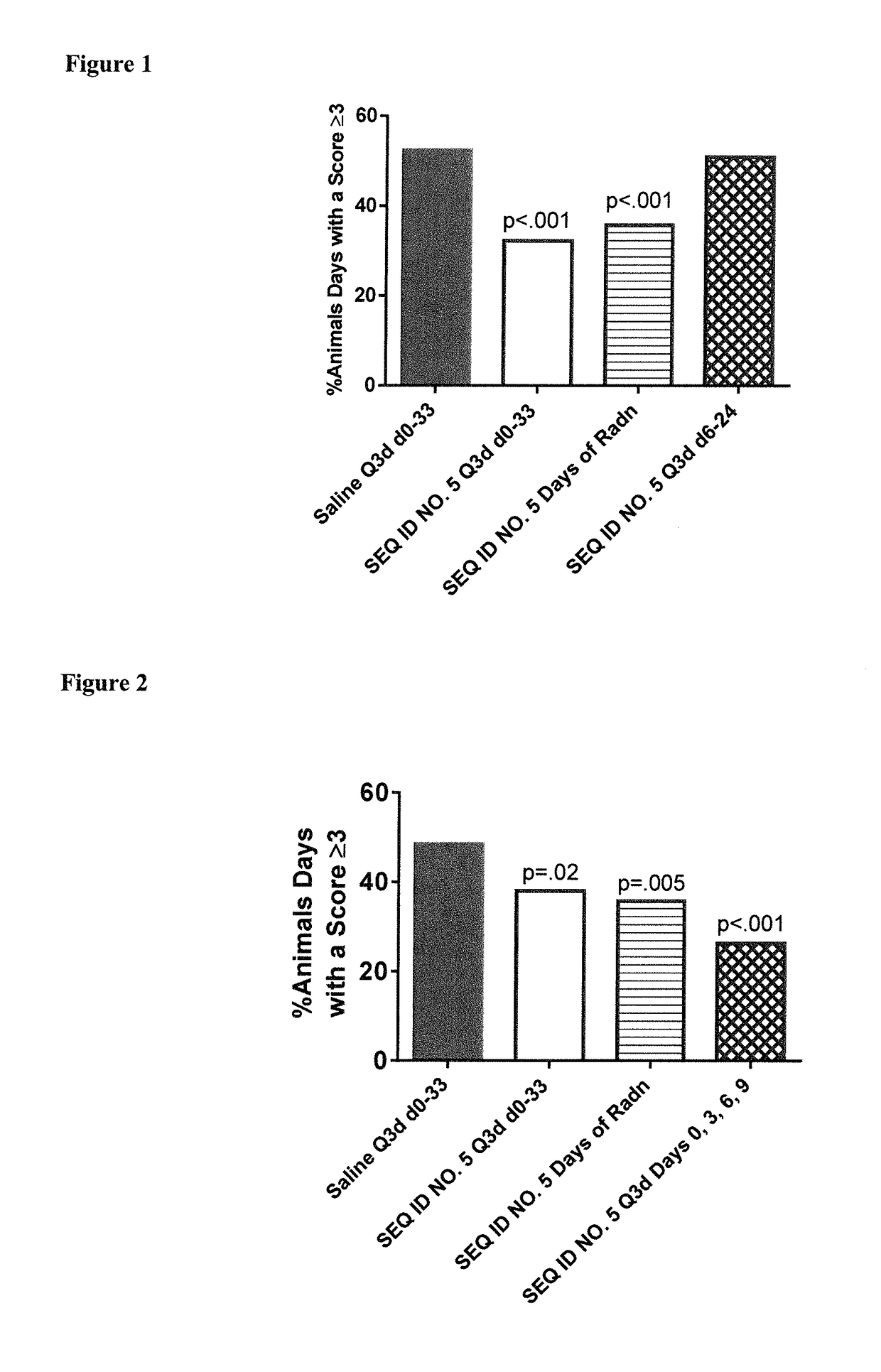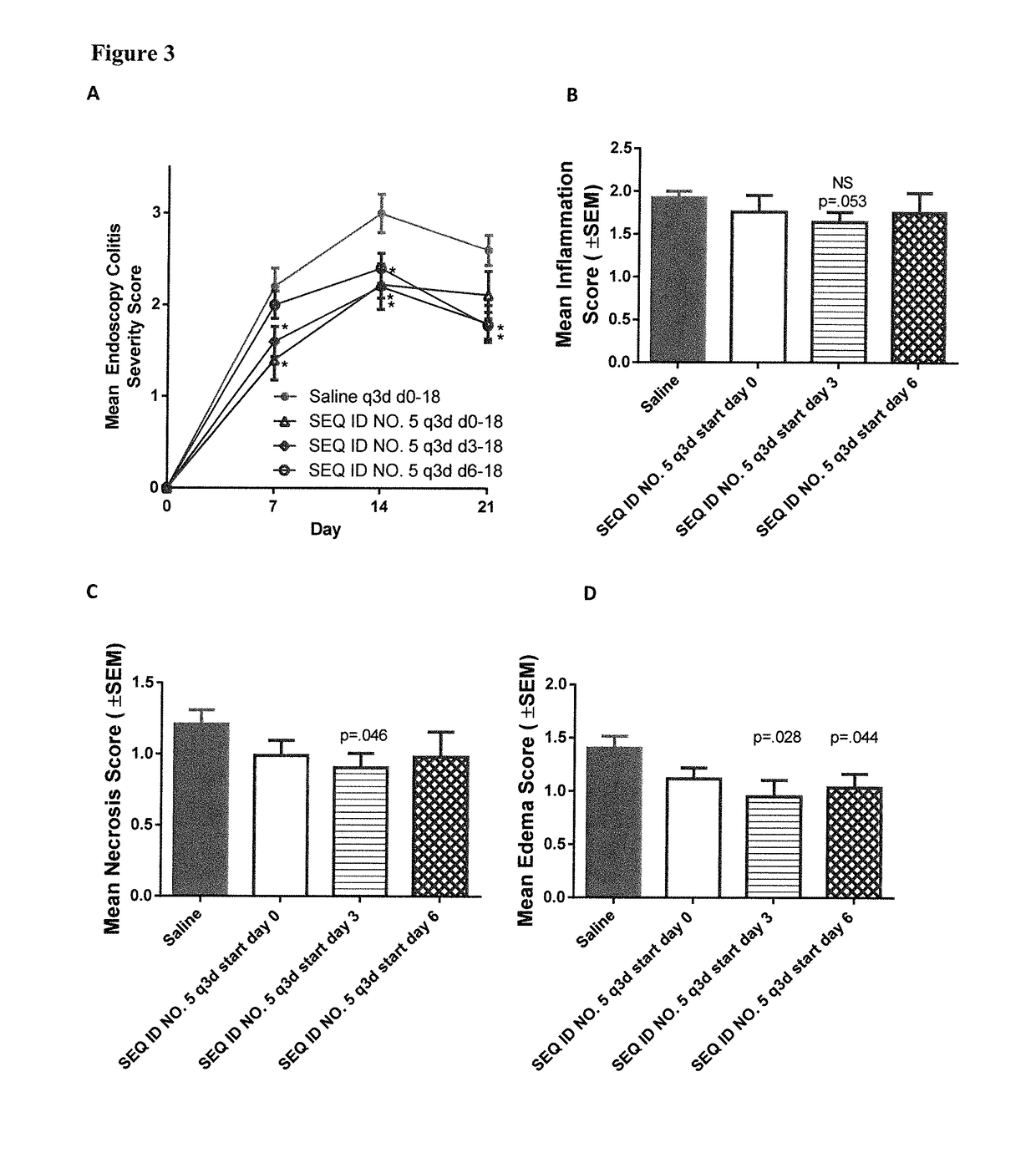Peptides and analogs for use in the treatment of oral mucositis
a technology of oral mucositis and peptides, which is applied in the direction of peptide/protein ingredients, antibacterial agents, drug compositions, etc., can solve the problems of severe diarrhea, infection, sepsis, etc., and achieve the effect of sepsis, and reducing the risk of infection
- Summary
- Abstract
- Description
- Claims
- Application Information
AI Technical Summary
Benefits of technology
Problems solved by technology
Method used
Image
Examples
examples
Peptide Synthesis
[0072]The peptides in Table 1 were synthesized using a solid phase peptide synthesis technique.
[0073]All the required Fmoc-protected amino acids were weighed in three-fold molar excess relative to the 1 mmole of peptide desired. The amino acids were then dissolved in Dimethylformaide (DMF) (7.5 ml) to make a 3 mMol solution. The appropriate amount of Rink amide MBHA resin was weighed taking in to account the resin's substitution. The resin was then transferred into the automated synthesizer reaction vessel and was pre-soaked with Dichloromethane (DCM) for 15 minutes.
[0074]The resin was de-protected by adding 25% piperidine in DMF (30 ml) to the resin and mixing for 20 minutes. After de-protection of the resin the first coupling was made by mixing the 3 mMol amino acid solution with 4 mMol 2-(1H-benzitriazole-1-yl)-1,1,3,3-tetramethyluronium hexafluorophosphate (HBTU) and 8 mMol N,N-diisopropylethylamine (DIEPA). The solution was allowed to pre-activate for 5 minutes...
PUM
| Property | Measurement | Unit |
|---|---|---|
| osmolality | aaaaa | aaaaa |
| swelling | aaaaa | aaaaa |
| vascular permeability | aaaaa | aaaaa |
Abstract
Description
Claims
Application Information
 Login to View More
Login to View More - R&D
- Intellectual Property
- Life Sciences
- Materials
- Tech Scout
- Unparalleled Data Quality
- Higher Quality Content
- 60% Fewer Hallucinations
Browse by: Latest US Patents, China's latest patents, Technical Efficacy Thesaurus, Application Domain, Technology Topic, Popular Technical Reports.
© 2025 PatSnap. All rights reserved.Legal|Privacy policy|Modern Slavery Act Transparency Statement|Sitemap|About US| Contact US: help@patsnap.com



